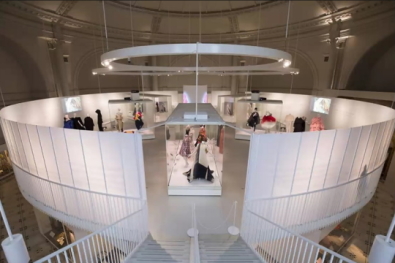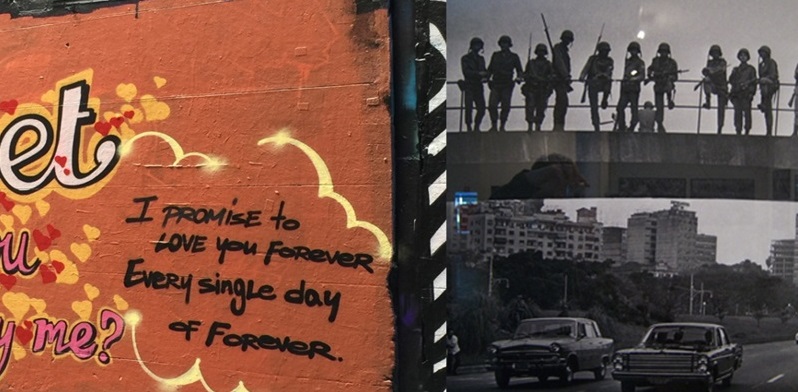Textiles and Fashion: examples of acquisition, storage, and presentations at the Victoria and Albert Museum in London
Lecturer Silvija Banić gave a tour of V&A's permanent exhibition focusing on textile and fashion galleries. She commented on the way textiles are displayed, the microclimatic conditions, and limited exposure to light due to the particular sensitivity of the material. The permanent exhibition has around 65,000 collection items on display. Frequent removal of objects for rent, conservation, research, or some other reason, requires that museum display cases open easily, which is not always the case. Another big challenge is displaying mannequins, which must not all be white, so the V&A experimented with different types, such as mannequins with faces, tailor mannequins, upholstered, or made of laminated paper.
In addition to cataloging and collection management, Banić walked the participants through the process of accessioning museum objects at the V&A. When it comes to potential acquisitions, some of her duties also include attending auctions and being in contact with art dealers. Obviously, V&A puts a lot of effort into its temporary exhibition program, with a department in charge of planning and executing exhibitions. Every exhibition proposal goes through the so-called Exhibition steering group. There is also the V&A Interpretation team that is involved in shaping communication with the audience through exhibit labels and texts.
Banić also addressed the V&A East project in Queen Elizabeth Olympic Park in London, due to open in 2023, that will house new storage space. In conclusion, the online lecture attracted the attention of Croatian museum professionals who actively participated and asked questions to learn more about various aspects of work in the V&A.
Memorialisation or propaganda?
All over the world can be found memorialisation, which often is controversial, and which can be equated with propaganda, designed to commemorate people and/or events that may be viewed very differently by modern audiences from those responsible for the original decision-making. In this address, I shall consider international examples - including the Argentinian Eva Peron and Chinese Generalissimo Chiang Kai-shek - of such messaging, which surrounds, influences, and manipulates all of us.
Ph.D. David Fleming. Director of National Museums Liverpool (2001-18) and Tyne & Wear Museums (1991-2001), David Fleming has a Bachelor's degree in History (University of Leeds), a Master's degree in English Local History (University of Leicester), and a Ph.D. (early modern urban history, University of Leicester). He has twice been President of the UK Museums Association. He is a member of the International Council of Museums (ICOM) Ethics Committee and its Museum Definitions Committee. For several years he was Chair of INTERCOM, ICOM's international committee for management and leadership, and of ICOM's Finance and Resources Committee. He has published extensively in the field of museum management, and currently is writing books on managing the modern museum and on public memorialization. His main expertise lies in international museum studies, which include slavery, ethics, human rights, and social history.
Today he holds a chair in public history at Liverpool Hope University, he is an adviser to the International Museum of Democracy in Rosario, Argentina, and President of the Federation of International Human Rights Museums.
July 14, 2020
Lecturer: Silvija Banić, Curator of Textiles (before 1800) at the Victoria and Albert Museum

January 21, 2020
Lecturer: David Fleming, Professor of Public History at Liverpool Hope University
